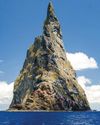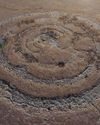
It’s estimated that there are millions of craters sprawled across the surface of the Moon. However, one stands out among all the lunar impact sites visible from our vantage point here on Earth. Named after the Danish astronomer, Tycho Brahe, the Tycho crater has long intrigued astronomers. Its high walls, flat floor and central peak make it seem like a city on Earth’s natural satellite. Even the Victorian selenographer (someone who charts the Moon) Thomas Gwyn Elger called it “the Metropolitan crater of the Moon”.
The walls of the crater span 51 miles wide and plummet around 2.92 miles to its floor. Incredibly, this is small in comparison to the Moon’s biggest impact site, the South Pole-Aitken basin, which stretches 1,550 miles in diameter. At its centre is a rocky peak that reaches 1.24 miles into the absent air. The curious peak is characteristic of large craters, the result of rock that was compressed by the massive force of the impact, then immediately rebounded upwards.
This story is from the Issue 178 edition of How It Works UK.
Start your 7-day Magzter GOLD free trial to access thousands of curated premium stories, and 9,000+ magazines and newspapers.
Already a subscriber ? Sign In
This story is from the Issue 178 edition of How It Works UK.
Start your 7-day Magzter GOLD free trial to access thousands of curated premium stories, and 9,000+ magazines and newspapers.
Already a subscriber? Sign In

WHY ARE GEMS DIFFERENT COLOURS?
Unearth the gemstone chemistry that results in a spectrum of decorative stones

HOW TRAIN TRACKS ARE LAID
This feat of engineering keeps long carriages in-line and fixed to the ground

THE WORLD'S WEIRDEST ISLANDS
Travel across the globe with us to discover unique and beautiful lands dotted across oceans and waterways

MIRROR PHYSICS
Reflect on the science of light bouncing off smooth and shiny surfaces

The 'Stonehenge' in the Golan Heights may not be an astronomical observatory TOM METCALFE
An ancient and enigmatic stone circle in the Middle East may not be a prehistoric astronomical observatory after all.

INSIDE A BALLPOINT PEN
Discover the mechanism that gives this everyday item the power to write

WHAT ARE HEADACHES?
From shooting sensations to dull aches, we explore the many causes of pain around the brain

IS THIS THE HUMAN OF TOMORROW?
HOW WIRES AND CIRCUITS ARE MINGLING WITH BLOOD VESSELS AND NERVES TO CHANGE THE COURSE OF HUMAN EVOLUTION

THE HUNT FOR FARAWAY MOONS
Astronomers are looking for moons outside our Solar System that may have even more chance of hosting life than the planets they're orbiting

HOW THATCHED ROOFS ARE BUILT
Learn all about this historic building method that masterfully tops roofs with layers of dry vegetation